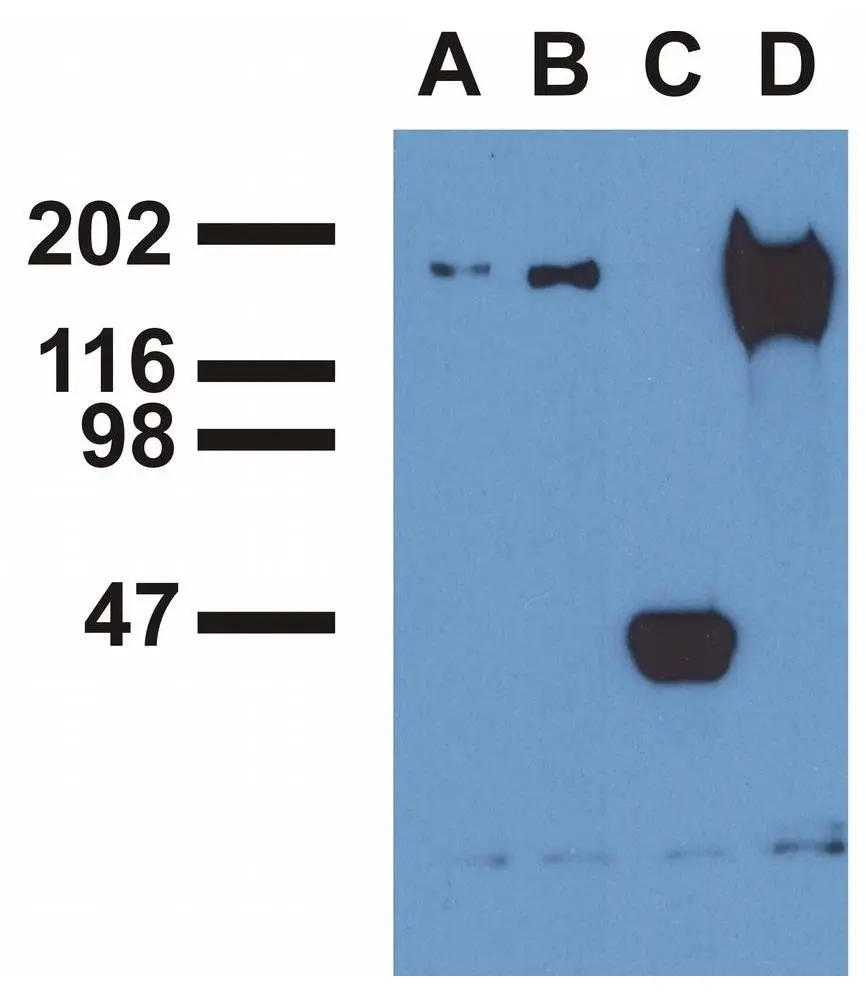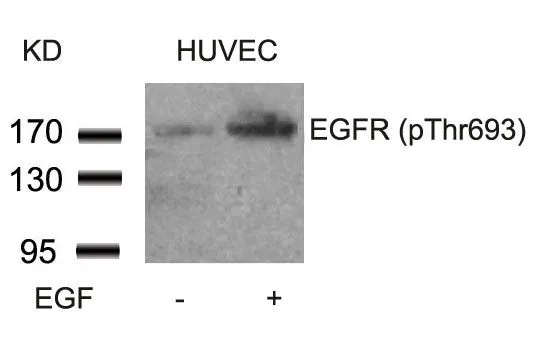![WB analysis of EGF-treated A431 (A), CALU-3 (B), MCF-7 (C), Jurkat (D) and Ramos (E) cell lines using GTX80161 EGFR (phospho Tyr1173) antibody [EM-13]. WB analysis of EGF-treated A431 (A), CALU-3 (B), MCF-7 (C), Jurkat (D) and Ramos (E) cell lines using GTX80161 EGFR (phospho Tyr1173) antibody [EM-13].](https://www.genetex.com/upload/website/prouct_img/normal/GTX80161/GTX80161_20191025_AP_001_402_w_23061322_170.webp)
WB analysis of EGF-treated A431 (A), CALU-3 (B), MCF-7 (C), Jurkat (D) and Ramos (E) cell lines using GTX80161 EGFR (phospho Tyr1173) antibody [EM-13].
EGFR (phospho Tyr1173) antibody [EM-13]
GTX80161
ApplicationsFlow Cytometry, ImmunoPrecipitation, Western Blot
Product group Antibodies
TargetEGFR
Overview
- SupplierGeneTex
- Product NameEGFR (phospho Tyr1173) antibody [EM-13] - Comparison Validated
- Delivery Days Customer9
- ApplicationsFlow Cytometry, ImmunoPrecipitation, Western Blot
- CertificationResearch Use Only
- ClonalityMonoclonal
- Clone IDEM-13
- Concentration1 mg/ml
- ConjugateUnconjugated
- Gene ID1956
- Target nameEGFR
- Target descriptionepidermal growth factor receptor
- Target synonymsavian erythroblastic leukemia viral (v-erb-b) oncogene homolog; cell growth inhibiting protein 40; cell proliferation-inducing protein 61; epidermal growth factor receptor; epidermal growth factor receptor tyrosine kinase domain; ERBB; ERBB1; erb-b2 receptor tyrosine kinase 1; ERRP; HER1; mENA; NISBD2; PIG61; proto-oncogene c-ErbB-1; receptor tyrosine-protein kinase erbB-1
- HostMouse
- IsotypeIgG1
- Protein IDP00533
- Protein NameEpidermal growth factor receptor
- Scientific DescriptionThe protein encoded by this gene is a transmembrane glycoprotein that is a member of the protein kinase superfamily. This protein is a receptor for members of the epidermal growth factor family. EGFR is a cell surface protein that binds to epidermal growth factor. Binding of the protein to a ligand induces receptor dimerization and tyrosine autophosphorylation and leads to cell proliferation. Mutations in this gene are associated with lung cancer. [provided by RefSeq, Jun 2016]
- Storage Instruction2°C to 8°C
- UNSPSC12352203

![IP analysis of EGF-treated A431 cells using phosphospecific EGFR antibodies ,GTX80162 (A), GTX80161 (B) , a commercial anti-EGFR polyclonal antibody(C), and anti-EGFR monoclonal mAb108 (D). The precipitates were immunoblotted with GTX80162 EGFR (phospho Tyr992) antibody [EM-12] or GTX80161 EGFR (phospho Tyr1173) antibody [EM-13] antibody. IP analysis of EGF-treated A431 cells using phosphospecific EGFR antibodies ,GTX80162 (A), GTX80161 (B) , a commercial anti-EGFR polyclonal antibody(C), and anti-EGFR monoclonal mAb108 (D). The precipitates were immunoblotted with GTX80162 EGFR (phospho Tyr992) antibody [EM-12] or GTX80161 EGFR (phospho Tyr1173) antibody [EM-13] antibody.](https://www.genetex.com/upload/website/prouct_img/normal/GTX80161/GTX80161_20191025_AP_007_400_w_23061322_119.webp)





![IHC-P analysis of human placenta tissue using GTX04735 EGFR antibody [31G7]. Antigen retrieval : Proteinase K](https://www.genetex.com/upload/website/prouct_img/normal/GTX04735/GTX04735_20240325_IHC-P_24032422_394.webp)
![ICC/IF analysis of HeLa cells using GTX04753 EGFR antibody [AEF-5]. Dilution : 1:500](https://www.genetex.com/upload/website/prouct_img/normal/GTX04753/GTX04753_20240216_ICCIF_10_24021523_403.webp)